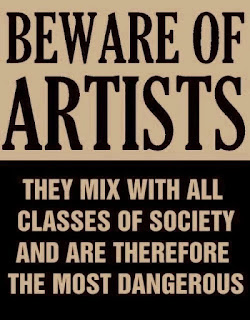The first time I met Ralph Hyde in person was at the old Woolwich Arsenal train station — itself a vaguely panoramic structure, with
curving glass walls and a cylindrical cupola — back in 1999. In those ancient days of the early, mostly non-pictorial Internet, neither of us had any idea of how to recognize each other; fortunately, he’d thought to bring along a copy of his
Panoramania! book, and I easily deduced that the white-haired gent near the top of the escalator must be he.
We went over to his home, a comfortable little cottage-like dwelling tucked away behind one of the brick walls of the Arsenal grounds. He and his wife welcomed me, and we sat in the small but comfortable living room, with gorgeous large-format prints of panoramas festooning the walls. Every topic led to another of interest, and the conversation continued at the dinner table. We could very likely have gone on all night, but I was anxious to get back to my hotel in London before the tube stopped running, and so Ralph called a mini-cab, which got me back to the station just in time.
In all my many visits to Britain, he was the only person I ever met who, in a completely natural manner, actually used the expression “jolly good.”
By the time of that meeting, we’d been corresponding by snail-mail for some time. I’d written to Ralph at the suggestion of the pre-eminant Victorianist Richard Altick who, when I told him that I was researching Arctic panoramas, recommended to me as a ‘brilliant young man’ who would surely set me in the right direction (Altick being by then nearly ninety, ‘young’ was a relative term!). And when I wrote, I discovered that this was true in a more exact way than I’d imagined — for Ralph himself was working on an article about panoramas of the polar regions! It was a mark of his unvarying graciousness that he didn’t discourage me from my own researches, shared all that he knew, and celebrated the work I’d done once it was published.
A few years later, along with my son — at that time an avid Civil War re-enactor — we met up with Ralph at Jonathan Gestetner’s home, and saw a small portion of his extraordinary collection. We saw, in person, the famous “London in a Nut-Shell,” along with several miniature panoramas of the Civil War, which we did our best to help him identify. On one wall in the house, a series of photographs showed the presentation of a Gestetner copying machine to each of the modern Popes — a reminder both of the significance of mechanical copying, and of the eventual passing of that technology and its era.
After that, most of our other meetings were at various gatherings sponsored by the International Panorama Council — at Hunter College in New York City and the Yale Center for British Art — by which time we’d switched to e-mail to continue our shared research on many topics. It was through these means that, in 2002, we stumbled together upon the passage in a German tourist’s account of his visit to the Marshall Brothers’ panorama of the Battle of Navarin, which proved — after a careful translation by fellow IPC member Gabriele Koeller — to be one of the most significant accounts of just what a “peristrephic” panorama was: “the canvas is not flat, but stretched out in a half circle. It is slowly moved on rollers, the scenes changing nearly imperceptibly.”
We continued our correspondence over the years, with Ralph often sending along copies of
handbills and other documents of polar panoramas. Without fail, he sent a Christmas card every year. More recently, I hadn’t been able to attend several of the IPC meetings at which he presented, but was glad to be able to see his illustrated talks on video, which were unfailingly informative, witty, and wry.
From what I’ve heard, Ralph was pursuing all his usual research passions right up to the moment of his passing — and I’m not surprised. A few months ago, I was delighted to see that his
book on paper peep-shows in the Gestetner collection was finally out, and I’d meant to see if I could get Ralph to autograph a copy. It’s strange to be presented with a long series of our archived e-mails, suddenly rendered poignant by the inability of the “send” button to ever reach him again.
One of Ralph’s ongoing projects, which I contributed to in small ways, and drew from in large ones, was his
Dictionary of Panoramists. I don’t know what state it might be in — Ralph certainly realized that, no matter what the time and effort, it would always be incomplete in some details. And yet, perhaps now, it might be possible to bring this work to fruition, either as a published reference, or — as Ralph himself had begun to think better — as some kind of online resource capable of continual updating. It would be, in either form, a most fitting memorial for a man whose career, like the paintings he studied, was all-encompassing. He was truly a "jolly good" fellow.
























